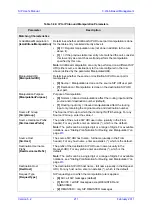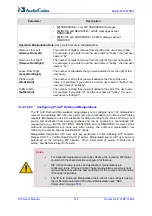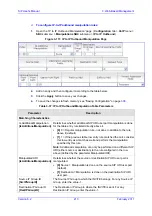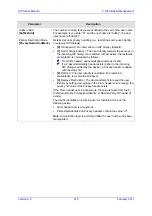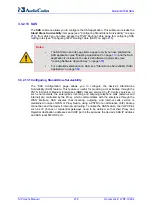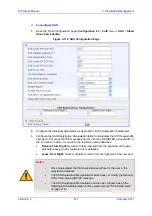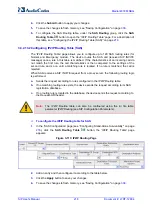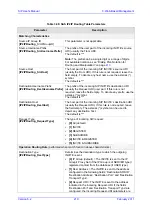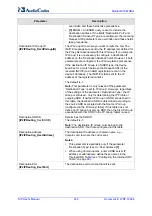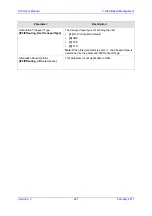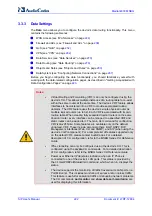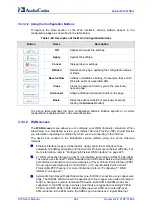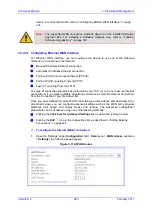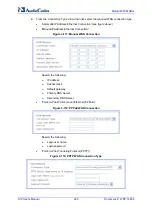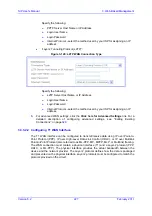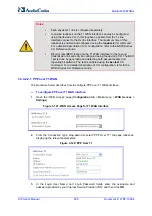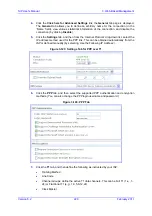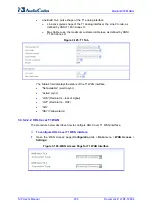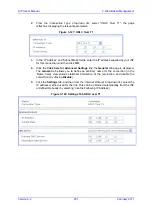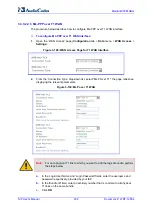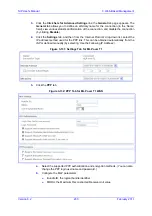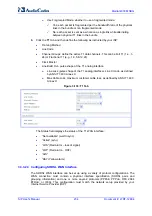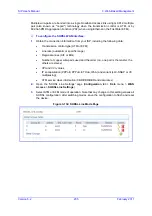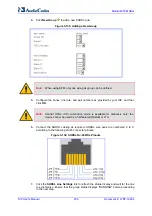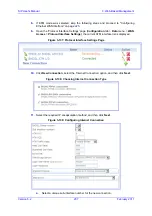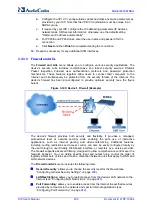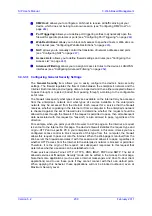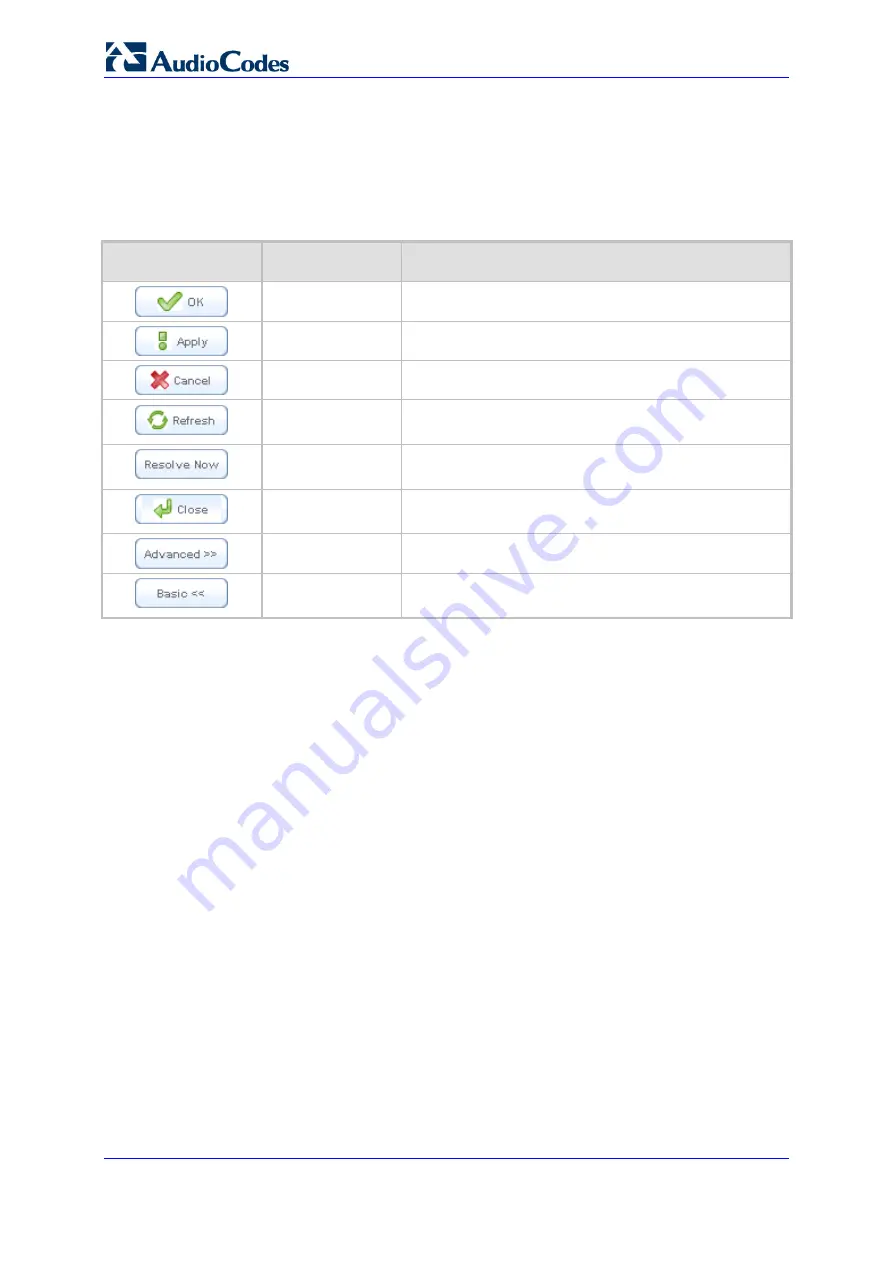
SIP User's Manual
224
Document #: LTRT-12804
Mediant 800 MSBG
3.3.3.1.2 Using the Configuration Buttons
Throughout the Data section of the Web interface, various buttons appear in the
configuration pages, as described in the table below:
Table
3-40: Description of the Main Configuration Buttons
Button
Name
Description
OK
Applies and saves the settings.
Apply
Applies the settings.
Cancel
Disregards your settings.
Refresh
Refreshes the page, updating the configuration values
or status.
Resolve Now
Verifies or validates a setting, for example, that a valid
Web site exists at a specified URL.
Close
Closes the page and returns you to the previously
opened page.
Advanced
Shows additional (advanced) fields on the page.
Basic
Hides the advanced fields (if previously shown by
clicking the
Advanced
button).
The above table describes the main configuration buttons. Buttons specific to a certain
configuration is explained later in the relevant section.
3.3.3.2 WAN Access
The
WAN Access
menu allows you to configure your WAN (Internet) connection. When
subscribing to a broadband service, your Internet Service Provider (ISP) should provide
you information regarding the method by which you are connecting to the Internet.
The device can connect to the broadband service (WAN), using one of the following
methods:
Ethernet interface (copper or fiber cable), using connection methods such as
automatic IP address allocation or Point-to-Point Protocol over Ethernet (PPPoE). For
more information, refer to ''Configuring Ethernet WAN Interface'' on page
T1 WAN connection through a dual T1 line interface (according to ANSI T1.403-1999).
The device uses its dual T1 WAN Data Service Unit/Channel Service Unit (DSU/CSU)
port interface to transmit and receive data using IP over Point-to-Point Protocol (PPP),
IP over High-Level Data Link Control (HDLC), or IP over Multilink Point-to-Point
Protocol (MLPPP) framing. For more information, refer to ''Configuring T1 WAN
Interface'' on page
.
Symmetric High-Speed Digital Subscriber Line (SHDSL) connection using copper wire
pairs. The SHDSL WAN connection supports up to four copper wire pairs according to
G.991.2, acting as a remote-terminal CPE device. Both ATM and EFM modes are
supported. In the ATM mode, a variety of protocols are supported, including PPPoE,
PPPoA, and RFC 2684 in both bridged (Ethernet-over-ATM) and routed (IP-over-
ATM) variants. In the EFM mode, the SHDSL port functions as a logical Ethernet
Summary of Contents for Mediant 800 MSBG
Page 2: ......
Page 366: ...SIP User s Manual 366 Document LTRT 12804 Mediant 800 MSBG Reader s Notes ...
Page 372: ...SIP User s Manual 372 Document LTRT 12804 Mediant 800 MSBG Reader s Notes ...
Page 390: ...SIP User s Manual 390 Document LTRT 12804 Mediant 800 MSBG Reader s Notes ...
Page 404: ...SIP User s Manual 404 Document LTRT 12804 Mediant 800 MSBG Reader s Notes ...
Page 616: ...SIP User s Manual 616 Document LTRT 12804 Mediant 800 MSBG Reader s Notes ...
Page 636: ...SIP User s Manual 636 Document LTRT 12804 Mediant 800 MSBG Reader s Notes ...
Page 652: ...SIP User s Manual 652 Document LTRT 12804 Mediant 800 MSBG Reader s Notes ...
Page 886: ...SIP User s Manual 886 Document LTRT 12804 Mediant 800 MSBG Reader s Notes ...


